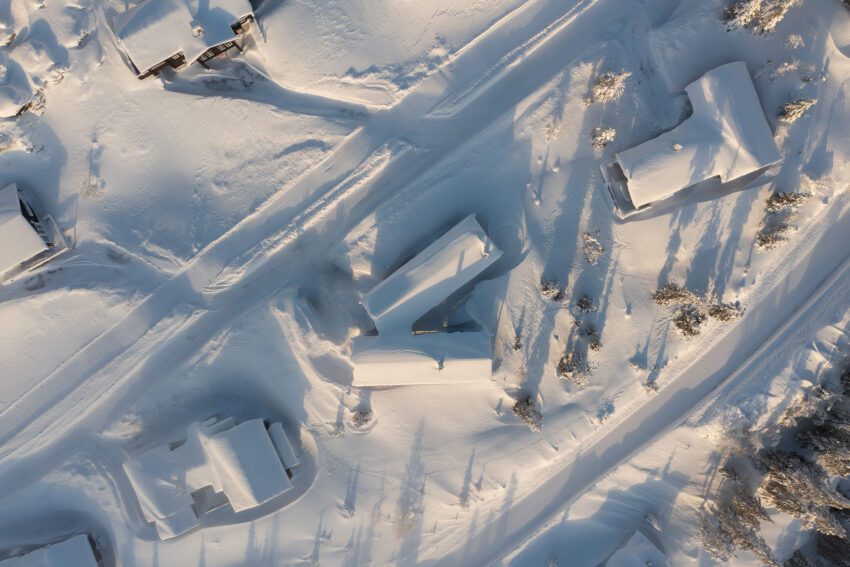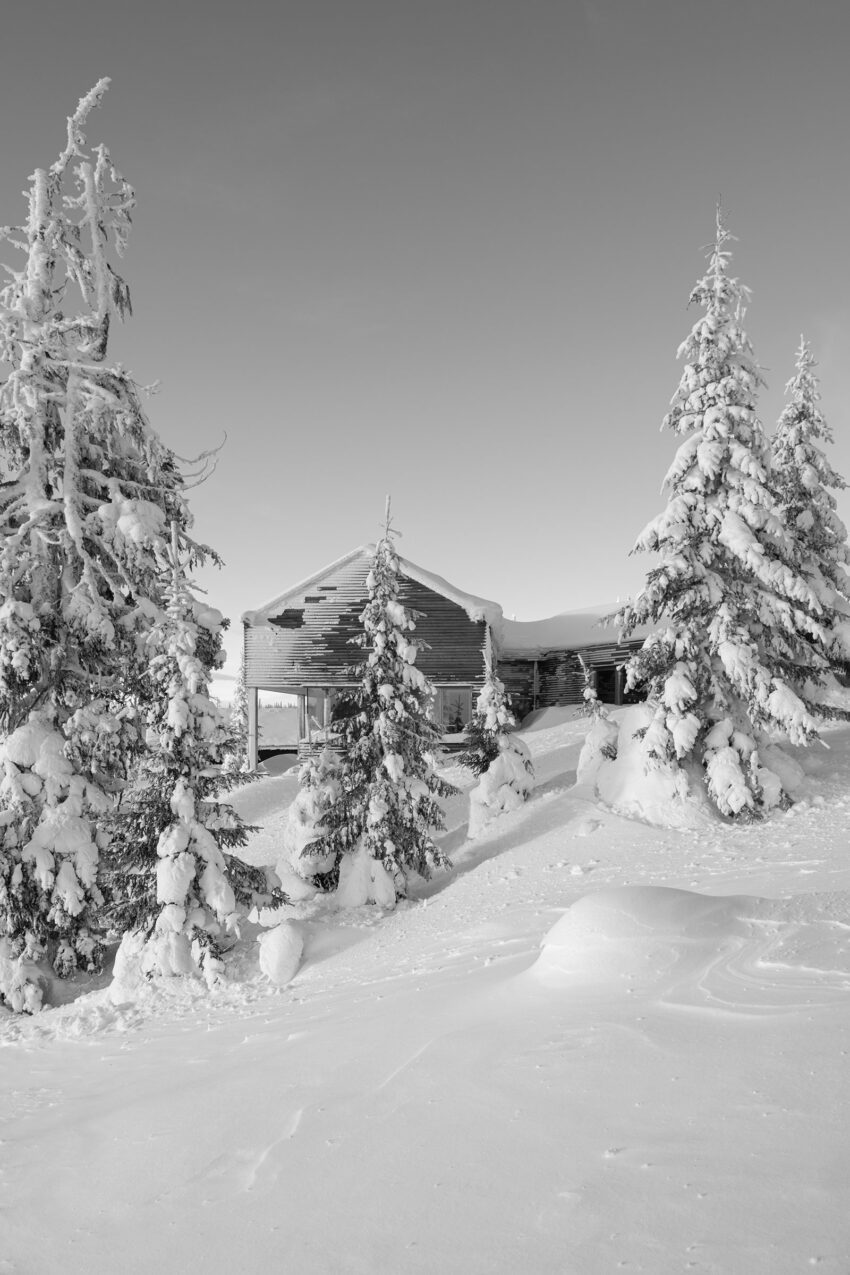When we think of a mountain retreat, often our minds evoke images of rustic, cozy cabins buried in snow or tucked among evergreens. However, Mork-Ulnes Architects’ latest offering in Kvitfjell, Norway—the Dobbel Hytte—defies these traditional conceptions in favor of a design that is as elegantly complex as it is serenely simple.
Dobbel Hytte Technical Information
- Architects1-2: Mork-Ulnes Architects
- Location: Kvitfjell, Norway
- Topics: Cabins
- Area: 1,750 ft2
- Completion Year: 2022
- Photographs: © Ivar Kvaal
The siting of the building’s mass becomes the design driver. To make it nimble and adaptable to the site, the cabin’s mass was broken into two, slim, gabled volumes. These two volumes are angled to perch along the contours of the site’s slope and step down with the grade.
– Mork-Ulnes Architects
Dobbel Hytte Photographs
Embracing Topographical and Design Challenges
Built as a ski cabin for a family of four, the Dobbel Hytte faces a multitude of challenges and ambitions. First and foremost, the site presents a challenge in itself: with little flat area to work with, the architects had to find a way to accommodate three bedrooms, two bathrooms, a spacious living area, and a two-car carport. But instead of seeing these constraints as limitations, Mork-Ulnes Architects saw them as opportunities to drive the design in innovative ways.
In a masterstroke of design ingenuity, the team decided to break the cabin’s mass into two slim, gabled volumes. These volumes are not just aesthetically pleasing but are functionally oriented to the site’s slope, angling themselves to perch naturally along its contours. This choice allows for the floor plan to step down with the grade, thereby creating an organic relationship between the built environment and the natural landscape.
One of the most fascinating aspects of the Dobbel Hytte is its attention to natural light. By angling the two building volumes, the architects have created spaces where light not only enters generously but also moves fluidly through the plan. This invites a unique interaction between indoor and outdoor spaces, fostering a continuous connection that goes beyond walls and windows.
The angled volumes open up spaces between the two building wings, which serve as natural extensions of the interior living areas. Whether it’s an outdoor meal in the summer or an apres-ski gathering in the winter, these interstitial spaces serve to blur the lines between the inside and the outside, amplifying the sense of openness and freedom that one seeks in a mountain retreat.
The Dobbel Hytte by Mork-Ulnes Architects represents a fine example of how design challenges can be turned into design opportunities. Through thoughtful spatial organization, sensitive adaptation to the landscape, and a deep understanding of the interplay between light, space, and material, this mountain retreat sets a new standard for what a contemporary cabin can be.
Dobbel Hytte Image Gallery
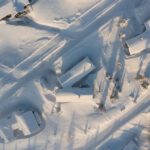
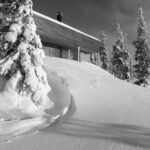






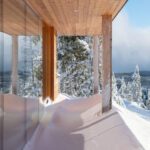

About Mork-Ulnes Architects
Mork-Ulnes Architects is an internationally recognized architecture firm with offices in San Francisco, California, and Oslo, Norway. Founded by Casper Mork-Ulnes, the firm combines Scandinavian pragmatism with California’s innovative spirit to create sustainable, functional, and aesthetically appealing designs.
Notes & Additional Credits
- Project Team: Phi Van Phan, Casper Mork Ulnes, Lexie Mork Ulnes


